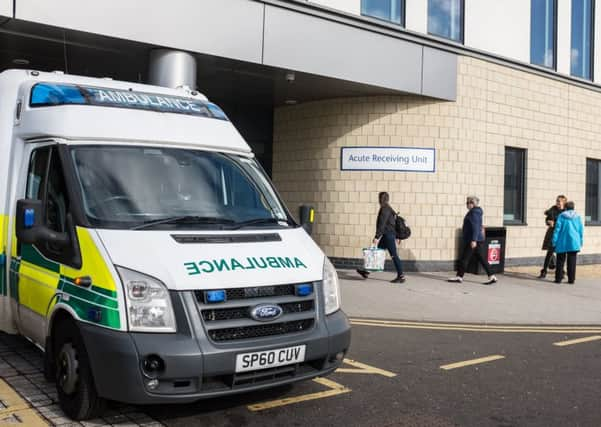Tories slam SNP over 999 ambulance dispatch times


The decline means that in the most severe emergency cases there is now an average delay of one minute 30 seconds between the receipt of a 999 call and the allocation of an ambulance, compared with a dispatch time of 57 seconds in 2013-14 for Category A emergencies.
Patient groups and politicians last night warned that the loss of vital seconds could prove vital when it comes to treating critically ill patients.
Advertisement
Hide AdAdvertisement
Hide AdThe worsening response times were uncovered by a Freedom of Information request made by the Scottish Conservative Party.
As well as Category A cases, the figures also revealed a lengthening dispatch time when it came to Category B and Category C cases.
The average time for Category B cases – which are defined as serious but non-life threatening – now stands at two minutes 48 seconds, compared with one minute 28 seconds three years ago. Similarly, dispatch times for Category C – the least serious type of ambulance case – also declined.
Today the average time for a category C response stands at four minutes 18 seconds, compared with two minutes 18 seconds three years ago.
When asked for an explanation for the lengthening in response times, the Scottish Ambulance Service said there had been a significant increase in the number of ambulance call-outs for the most serious cases.
It said the service was having to deal with 50 extra Category A cases a day and was responding to more patients.
But Margaret Watt, of Scotland Patients’ Association, said: “This is of great concern. Every second counts when someone is having a heart attack. If the patient has to wait for an ambulance while in a critical condition they get agitated, which doesn’t help.
“I know ambulance staff are also concerned about this. It is not their fault. Often it is caused by ambulances being delayed when they are dropping off patients at hospital.
Advertisement
Hide AdAdvertisement
Hide Ad“The ambulance cannot leave the hospital until the patient has been signed in and this takes ambulances out of the system. It is a vicious circle.”
The Scottish Conservative community safety spokesman Oliver Mundell said the Scottish Government had to do more to shorten despatch times.
He said: “It’s clear from these figures that there’s been a major slip in performance with response times. They’ve got consistently worse, and this has to change as a matter of urgency.
“For every second that someone has to wait longer for an ambulance, their chances of recovery can worsen.
“I appreciate measures have been put in place to address this, but people will be sceptical about their impact.
“The Scottish Ambulance Service doesn’t have its problems to seek, especially in rural areas. Sickness levels are too high, and those staff left over are too stretched as a result.”
He added: “The SNP has been in charge of this for almost a decade, and has to take full responsibility for these delays.”
A Scottish Ambulance Service spokeswoman said: “In the reporting year, despite receiving an extra 1,000 calls a month for our services compared to the previous year, we responded to more Category A patients, saving more lives and improving patient outcomes.
Advertisement
Hide AdAdvertisement
Hide Ad“Demand for Category A emergency calls increased by 4 per cent last year which is an extra 50 cases a day, and Category B calls by 3.6 per cent. Our crews may also be responding to patients in challenging conditions, such as adverse weather, which can create difficulties in reaching incidents.
“Despite the challenging context of increased demand for services, the average response time for potentially life threatening calls was 7.4 minutes in Scotland and we reached more Category A cardiac arrest patients within eight minutes than the previous year, up by 4.5, again, saving more lives and improving patient outcomes.”
Shona Robison, the Health Secretary, said: “Despite the Scottish Ambulance Service recently experiencing higher demand levels, our crews are saving the lives of more patients than ever before. The average response times for call-outs remains around 7.5 minutes.
“We have increased the Scottish Ambulance Service budget by £11.4 million this year, which will see the service train an additional 200 paramedics as part of our commitment to training 1,000 more.”